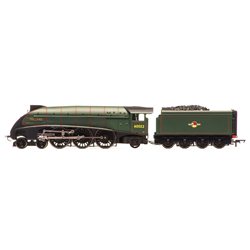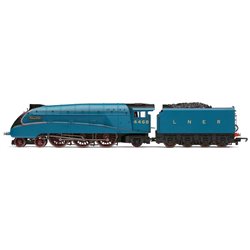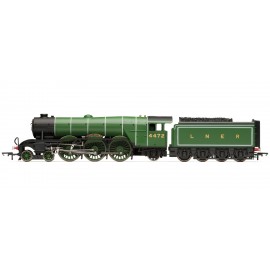Mainline Railways was a British model railway brand that operated between 1976 and 1983, introduced by Palitoy, the...
No products
Product successfully added to your shopping cart
There are 0 items in your cart. There is 1 item in your cart.
Search Tips
Open on Good Friday
The shop will be open on Friday 18th April.
Bring us some chocolate!
What is a 4-6-2 locomotive?
A 4-6-2 railway locomotive is a steam engine with 4x leading wheels, 6x driving wheels and 2x trailing wheels. Engines with this wheel arrangement are known pretty much worldwide as Pacifics.
Steam engines with the wheel arrangement 4-6-2 were considered to be a revolution in locomotive design. First appearing in 1901, the evolution of the steam engine hit a milestone as the most successful elements of the 4-6-2's predecessors were brought together to create an engine design that was to last over half a century.
The 4-6-2 is commonly believed to have evolved from earlier 4-4-2 designs, truth be known the Pacifics have more in common with 4-6-0s and the 2-6-2 Prairies, but whatever the bloodline, the combination of technology and engineering resulted in a truly magnificent locomotive that dominated express passenger traction until being replaced by diesel and electric traction in the 1950s.
The success of the Pacifics seems to lie in the four-wheeled leading truck giving them stability at speed, the six driving wheels accommodating a larger boiler and higher tractive effort and the trailing wheels facilitating the firebox being located further back allowing it to be both wider and deeper.
Several of the worlds most famous engines are Pacifics including the Flying Scotsman and Mallard. Mallard not only broke but still holds the speed record for a steam locomotive when it achieved an incredible 126mph on 3rd July 1938.
Click here to receive the tips weekly in your mailbox. You can unsubscribe at any time.










